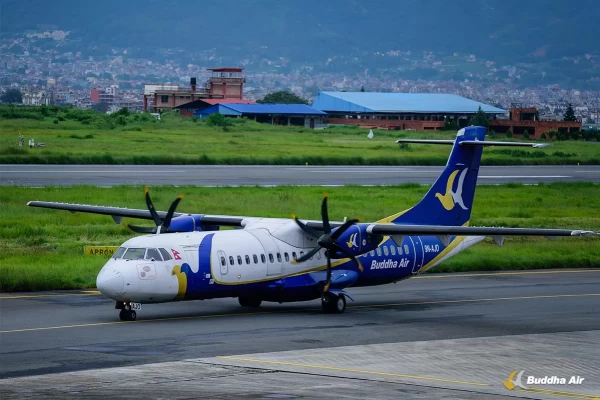Impact of Aviation Safety Regulations and Standards

With the entire industry standing on thin ice, aviation must set strict standards and guidelines to ensure systematic, well-managed, and safe operations. While air transportation has revolutionised commutations for decades, it is one of the most delicate and high-maintenance sectors, and we are all up for the challenge of making sure you get home safe.
Aviation safety underscores the protection of passengers, crew, and aircraft. The impact of aviation safety regulations revolves around establishing standard practices that the airlines and aviation authorities must follow to maintain high levels of safety. These regulations are not only vital for day-to-day operations but also for the long-term sustainability of the aviation sector. This blog post will take you on a flight to understand how these in-depth regulations shape safety and reliability depending on how an airline applies and enforces them.
Development of Aviation Safety Standards
The development of aviation safety standards is a collaborative effort involving international organisations, national aviation authorities, and industry stakeholders. These standards are designed to address the various risks associated with aviation and to promote safe practices across the industry. Organizations such as the International Civil Aviation Organization (ICAO) play a central role in setting global safety standards, which are then adopted by national authorities like the Civil Aviation Authority of Nepal (CAAN).
The flight safety standard department in Nepal works closely with CAAN to implement these standards, ensuring that they are tailored to the specific needs and challenges of the country’s aviation sector. All airlines are required to operate under these very standards.
Key Areas of Aviation Safety Regulations
Aviation safety regulations cover a wide range of areas revolving around the safety and security of flight operations. Some of the key areas include aircraft design and maintenance, pilot training and certification, air traffic control procedures, and emergency preparedness.
Each of these areas is governed by specific regulations that dictate the minimum standards that must be met. For example, aircraft must undergo regular inspections and maintenance checks to ensure they are airworthy, while pilots must undergo rigorous training and assessments to maintain their licenses. The flight safety CAAN oversees these areas in Nepal, ensuring compliance with both national and international standards. The airline goes through a meticulous process of recruitment to attain the standards.
Enforcement of Aviation Safety Regulations
Without proper enforcement, even the most comprehensive regulations would fail to achieve their intended impact. Aviation authorities are responsible for monitoring compliance with safety standards and taking corrective actions when necessary. By conducting regular audits and inspections, investigating incidents and accidents, and imposing penalties for non-compliance, airlines gain confidence in operating by the regulations.
In Nepal, the flight safety standard department plays a key role in the enforcement of these regulations, working in collaboration with CAAN to ensure that all aviation activities meet the required safety standards. The impact of aviation safety enforcement is significant, as it helps to prevent accidents and incidents, thereby protecting lives and property.
Impact of Aviation Safety Regulations
The impact of aviation safety regulations extends beyond just ensuring safe flights. These regulations also contribute to the overall efficiency and reliability of the aviation industry. By setting clear standards and guidelines, they help to reduce the likelihood of accidents and incidents, which in turn minimizes disruptions to flight schedules and operations. As a matter of fact, the impact of aviation safety regulations is felt in the confidence they inspire among passengers and industry stakeholders. When people know that strict safety standards are in place and are being effectively enforced, they are more likely to trust and choose air travel. This trust is evident in the growth and development of the aviation industry.
Conclusion
The impact of aviation safety regulations is far-reaching, shaping every aspect of the aviation industry from aircraft design to pilot training and flight operations. These regulations are essential for maintaining the high standards of safety that passengers and industry stakeholders expect. Through rigorous enforcement and continuous improvement, aviation authorities like CAAN ensure that these standards are upheld, contributing to the overall safety, efficiency, and reliability of air travel. As the aviation industry continues to evolve, the importance of these regulations will only grow, underscoring their vital role in ensuring safe and secure skies.
FAQs
What is the purpose of aviation regulations?
The purpose of aviation regulations is to ensure the safety, security, and efficiency of the aviation industry. These regulations set the standards that must be followed by all aviation stakeholders, including airlines, airports, and air traffic controllers. By establishing clear guidelines and practices, aviation regulations help to minimize risks and promote safe operations.
What are the benefits of the aviation safety reporting system?
The aviation safety reporting system provides a mechanism for identifying and addressing potential safety issues before they lead to accidents or incidents. It allows pilots, crew members, and other aviation professionals to report safety concerns confidentially, enabling authorities to take proactive measures to mitigate risks. The benefits of this system include improved safety, enhanced risk management, and a culture of continuous improvement within the aviation industry.
Which has the regulatory responsibility for aviation safety?
Regulatory responsibility for aviation safety typically lies with national aviation authorities, such as the Civil Aviation Authority of Nepal (CAAN) in Nepal. These authorities are tasked with developing, implementing, and enforcing aviation safety regulations in line with international standards set by organizations like the International Civil Aviation Organization (ICAO). They work closely with industry stakeholders to ensure that all aviation activities comply with the established safety standards.
